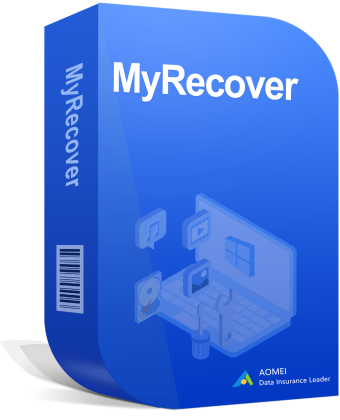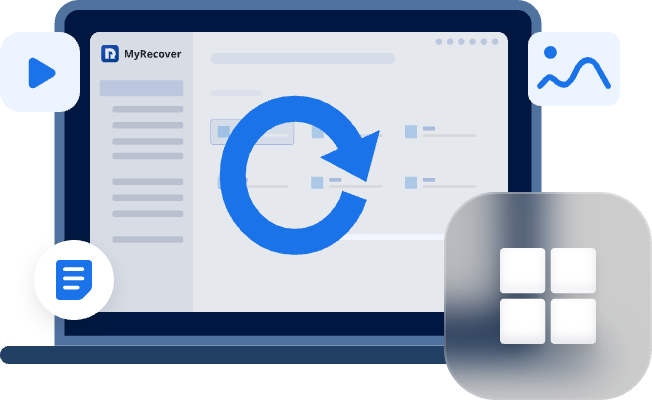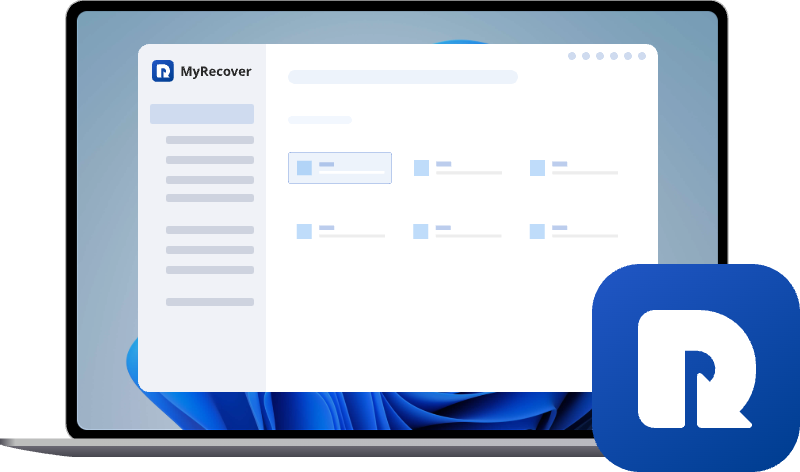Recover Your Data: Solving "Dash Cam Keeps Saying Format SD Card" Error
Facing a persistent dash cam sd card error? If your dash cam keeps saying format sd card, our tutorial details how to rescue your footage using proven data recovery techniques, ensuring you don't lose critical evidence.
Dash Cam Keeps Saying Format SD Card!
My dashcam keeps telling me my SD card needs to be reformatted.
Every time I turn on my car, I get the same pop-up. How do I fix it? I've taken it and reformatted it with my computer, and I've also reformatted it with the dashcam, and I still get that every time I drive. It's being powered by a cigarette adapter. Maybe that's corrupting the data? Please help. I think it's a Nextbase
- Question from reddit.com
When your dash cam keeps saying format SD card, it's more than a minor inconvenience; it's a direct threat to your peace of mind and your driving security. That little memory card holds evidence, cherished road trip memories, and your proof of innocence in a world of unpredictable traffic. But before you throw your hands up in despair and hit that Format button, stop!
What to do if you are stuck in this situation? Don't worry, you can find solutions and recover your files easily.
About the Dash Cam SD Card Error
So, what’s actually going on when your dash cam starts throwing a tantrum? At its heart, this error is your dash cam’s way of telling you it can no longer reliably read or write to the SD card. The cam tries to access the card to save a new video file, encounters a problem, and its failsafe mechanism is to demand a clean slate. Unfortunately, formatting wipes out all your existing data.
Why Your Dash Cam Keeps Saying Format SD Card?
The reason your dash cam keeps saying format SD card isn't random. The following main factors are listed here:
- Physical Damage and Wear on the SD Card. Dash cams and their SD cards endure extreme temperature swings, constant vibration, and a relentless cycle of being written to and erased. This harsh environment inevitably leads to wear and tear.
- File System Corruption. The file system is the card's table of contents, and if it gets jumbled—perhaps due to an improper shutdown, like unplugging the cam before it's finished saving a file—the cam can't make sense of the data.
- Bad Sectors. Other times, the card itself may have developed bad sectors, little damaged areas that can no longer store information reliably. When the cam hits one of these, it panics and demands a format.
- Incompatible or Faulty Memory Card. Using a card that’s too slow, or a fake SD card, then your dash cam won’t format the SD card, and cannot initialize properly.
Specific Brand Issues and Solutions
While the underlying problems are universal, some brands have their own quirks. Let's look at two common ones.
Resolving Apeman Dash Cam Format Errors
For users finding that their Apeman dash cam keeps saying format SD card, the solution often starts with a firmware update. Apeman periodically releases firmware to improve compatibility and fix known bugs, including card handling issues.
Another brand-specific tip is to use the official Apeman formatting tool within the camera's menu, not your computer, as the computer may use a slightly different file system allocation size.
If the problem persists, it strongly points to a card that's on its last legs and needs replacing.
Fixing Nextbase Dash Cam Format Problems
Nextbase dash cams are known for their advanced features, but they can be picky about their memory cards.
If your Nextbase dash cam keeps saying format SD card, the first port of call is to check their official list of recommended SD cards. Nextbase provides a curated list of models they have tested and certified to work flawlessly with their devices. Using a card not on this list is a gamble.
Additionally, a hard reset of the dash cam itself can clear out any glitched settings that might be causing the dash cam SD card error.
Fast Recover Footage from SD Card Safely
This is where a reliable data recovery tool like MyRecover becomes your best friend if there is important footage on the SD card, and your dash cam keeps saying format it. It’s designed to scan the raw data on your card and reconstruct files even after the file system has been severely corrupted or a format has been initiated.
MyRecover is a powerful yet user-friendly Windows application that can dig deep into your storage device and scan MP4 videos, JPG photos, and others. Even when the directory pointing to these files is gone, the data itself often remains on the card until it's overwritten. MyRecover finds these remnants and pieces them back together for you.
Advantages of MyRecover:
- Fast. You can recover files fast with the highest recovery rate in the market.
- Comprehensive. It allows you to recover files from complex situations, like a formatted SSD, a RAW partition, a write-protected disk, etc.
- Unlimited. You can recover unlimited files at once.
- Preview. To ensure your files are intact and right, preview to prevent corrupted files.
Follow these steps carefully to get your videos back from the Dash cam SD card.
1. Stop using the dash cam immediately and remove the SD card to prevent overwriting your lost files. Insert the card into your computer via a card reader. Crucially, always save any recovered files to a separate location—like a folder on your computer's hard drive or an external drive—never back onto the original SD card.
2. Download and install MyRecover. Once installed, run it. Tap USB/SD Card Recovery, select your dash cam's SD card, and click the "Scan" button. MyRecover will begin an intensive scan, combing through every sector of the card.
3. After the scan completes, MyRecover will present the results in an organized way, and hit OK.
- Tips:✎...
- You can often browse by original folder structure (if it can be recovered), file name, size, path, or type. This is a huge time-saver. Use the "Filter" feature to show only videos, typically MP4 or MOV files for dash cams.
- You can also use the search bar to look for specific file names if you remember them.
- Most importantly, MyRecover allows you to preview many file types. Click on a found video to see if it plays back correctly before you go through the recovery process. This ensures you're recovering intact files.
4. Once you’ve selected all the files you wish to recover, click the "Recover" button.
5. A dialog box will appear asking you to choose a location to save the files.
- Tips:✎...
- Remember the golden rule: select any location EXCEPT the original SD card.
- To recover files from unlimited computers, MyRecover Technician is your best choice.

- Recover Deleted Files Easily with Simple Clicks
- 1000+ File Formats Supported
- Support HDD, SSD, External Hard Drive, USB Drive, SD Card, etc.
- Quickly Find Files Using File Types, Name, Size, etc.
- Preview Files Before Recovering
- Recover Unlimited Data
How to Fix "Dash Cam Keeps Saying Format SD Card"?
Way 1. Update Dash Cam Firmware
Wipe the SD card, and put the firmware .bin file on it, then just power up. Takes a few minutes maximum. Then try if your SD card is working on your dash cam.
Way 2. Fix Bad Sectors in SD Card
Bad sectors on your SD card can corrupt video files and trigger persistent dash cam errors. The Windows CHKDSK utility can identify and repair these sectors.
Step 1: Connect the SD card to your computer.
Step 2: Search for "cmd" in the Windows search bar, right-click Command Prompt, and select Run as administrator.
Step 3: If a User Account Control (UAC) window appears, select Yes to proceed.
Step 4: In the Command Prompt window, type chkdsk G: /f /r (replace "G" with your SD card's actual drive letter) and press Enter.
Way 3. Format SD Card
For best results, always format the SD card directly in your dash cam. This guarantees the correct file system and settings for your specific model.
If that's not possible, you can format it using a Windows computer by following these steps:
Step 1: Connect the SD card to your PC using a reliable card reader.
Step 2: Open File Explorer (press Windows Key + E), and navigate to This PC.
Step 3: Right-click on your SD card's drive and select Format.
Step 4: From the File system dropdown, choose the format your dash cam requires (typically FAT32 or exFAT).
Step 5: Click Start to begin the formatting process.
Way 4. Replace the SD Card for the Dash Cam
Some dashcams (especially BlackVue) are extremely finicky about what kind of card is in them. Try different cards until it works correctly in your BlackVue.
What to Do When Your Dash Cam Won't Format the SD Card?
Sometimes, the situation seems hopeless when even the format command fails. Don't panic. First, try the card in a different device, like a PC or laptop. If your computer can read and format it, the issue might be with the dash cam's card reader.
Gently clean the cam's SD card slot with a blast of compressed air. If the computer also fails to format it, the card itself is likely the problem.
If basic steps don't cut it, download the official SD Card Formatter tool from the SD Association's website. This free tool is designed specifically for SD cards and often succeeds where built-in operating system tools fail.
Tips for a Reliable Dash Cam Experience
In the end, keeping your dash cam running smoothly boils down to a little bit of knowledge and regular, simple maintenance. Understand that SD cards are consumable items with a limited lifespan—plan to:
- Replace them every 12-24 months, depending on usage.
- Stay on top of firmware updates for your specific camera model, as these often include stability improvements.
By being proactive, you can transform your dash cam from a flaky piece of tech into a trusted, reliable guardian of the road, ensuring it's always watching your back when you need it most.
FAQs about Dash Cam Keeps Saying Format SD Card
Q: Why does my dash cam keep asking to format the SD card even after I just formatted it?
A: This typically means your SD card is failing or is incompatible. If the error returns right after a proper in-camera format, the card's memory is likely worn out and can't store data reliably anymore. The only reliable fix is to replace it with a new, high-endurance model.
Q: Can I use any SD card in my dash cam, or does it need to be a specific type?
A: No. Dash cams need cards with fast, sustained write speeds. A slow or standard consumer-grade card will cause corruption and errors. Always use a "High Endurance" card with a V30 or higher speed rating for reliable performance.
Q: I formatted the card by mistake! Is my data permanently gone?
A: Not necessarily. A quick format usually just erases the file index, not the video data itself. Stop using the card immediately to prevent overwriting. You can then use recovery software like MyRecover to scan for and restore the "lost" files.
Q: What is the difference between formatting in the camera vs. on my computer?
A: Always format in the dash cam. This ensures the card is set up with the exact file system and cluster size optimized for that specific camera. Computer formatting can use incompatible settings, leading to future instability.
Q: How often should I replace the SD card in my dash cam?
A: SD cards have a limited lifespan. For a dash cam that records constantly, plan to replace the card every 12 to 18 months as a preventative measure. This is cheap insurance for your valuable footage. Heavy users may need to replace it even sooner.


